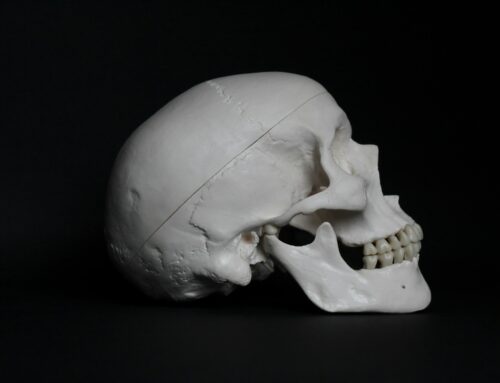The American Dental Association have released a new guideline on tooth decay. Tooth decay affects a huge number of people, and if not treated correctly, can lead to further problems. Therefore, the American Dental Association hope that the new guideline can provide dentists with effective approaches to patient care and an improvement in treatment outcomes for patients.

The American Dental Association (ADA) have released a new clinical practice guideline [1]. This guideline is for tooth decay – which continues to be a growing problem.
The ADA hope that this guideline can result in better treatment outcomes for patients and general improvements in oral health across the nation.
About tooth decay
Tooth decay is a big problem facing society. This guideline from the ADA is very relevant – given that research shows almost 90% of American adults aged 20 to 64 have had tooth decay at some point in their lives [2].
Tooth decay is caused by acids that are produced by bacteria. Bacteria breaks down food debris or sugar, which results in acid being formed. This combination erodes enamel, causing tooth decay [3]. If left untreated, tooth decay results in cavities, which then require a filling.
Tooth decay guideline
An expert panel of dentists developed the guideline, having reviewed approximately 300 published studies. Then, their findings were published in the July issue of The Journal of the American Dental Association [1].
The guideline features 16 recommendations in regards to the treatment of moderate and advanced tooth decay. Moreover, these recommendations are for both primary and permanent teeth that have not received past endodontic treatment like a root canal – which is typically required when a cavity fails to adequately stop tooth decay [1].
The recommendations were on two major topics – the use of a technique known as conservative carious tissue removal (CTR) and the use of restorative materials.
The use of CTR
A common theme throughout the guideline is the recommendation of the use of a technique known as conservative carious tissue removal (CTR). CTR involves a dentist removing infected tissue whilst protecting as much of the original tooth structure as possible [1].
The guideline reasons that research suggests this is less likely to result in negative treatment outcomes. Additionally, this is backed up by existing research – which has shown that CTR results in lower pulp exposure rates, which results in excruciating pain [4].
Another key recommendation involves selective CTR being an effective treatment option in the majority of cases involving moderate or advanced decay [1]. This method involves removing most of, albeit not all, of the decayed tissue, before sealing the tooth with a filling or cap [1]. Therefore, this method means any bacteria left under the filling or cap is unable to multiply, which stops tooth decay from worsening.
Continuing the use of current materials
Additionally, the guideline also reaffirms the effectiveness of the restorative materials used for moderate or advanced tooth decay [1]. For example, this refers to tooth-colored fillings (composite) and silver-colored fillings (amalgam).
Furthermore, the guideline suggests that the specific material to use depends on the extent of the decay [1]. The guideline also features advice for preformed caps – which the ADA state is effective.
ADA Comments
Vineet Dhar is a member of the ADA Council on Scientific Affairs and was the lead author of the guideline. He commented on the guideline [5].
Dhar said that these recommendations are capable of achieving the two main objectives of dental treatment – maintaining healthy tooth structure and protecting the soft issues inside the tooth [5].
Explaining the need for the guideline, Dhar said that “dentists needed an evidence-based guideline to provide them with a range of treatment choices for patients with moderate to advanced tooth decay” [5]. Moreover, Dhar said the recommendations will be able to “inform restorative care strategies” globally [5].
The ADA hope that this guideline can help to improve treatment outcomes for patients. Therefore, this could improve oral health around the world, which is a highly desirable situation.
Thinking points…
[1] This guideline talks about and provides recommendations for tooth decay. Tooth decay is certainly problematic, with early detection being very important. The easiest way for tooth decay to be detected and treated is by seeing a dentist. Therefore, it is important to visit a dental clinic for an appointment if you think you may have tooth decay. We recommend booking an appointment now!
[2] It is understandable to be concerned if you do have existing tooth decay. While having a dental check-up is the best approach to take, there are also other practical things you can do. This includes having excellent oral hygiene – which involves brushing your teeth at least twice a day, regularly flossing and having a low-sugar diet. But while these will all help, you should attend a dental clinic regularly for the best results for the treatment of tooth decay.
What we offer at Taradale Dental
Taradale Dental is a Calgary dental clinic that provide its patients with a wide range of dental treatment options and advice aimed at improving their oral health.
It is very important to have excellent oral hygiene. This involves brushing your teeth at least twice a day, flossing regularly and eating healthily. Therefore, this should help your oral health.
We advise our patients to attend our Calgary dental clinic at least twice per year for a regular dental check-up. At these check-ups, we provide a comprehensive review of a patient’s oral health. If any problems are detected, we have many treatments available. For example, these include cavity fillings and root canals.
Here at Taradale Dental, we also have some cosmetic treatments available! These include dental implants, teeth whitening and Invisalign™! Many people find that these treatments have a positive impact on their appearance, confidence and self-esteem.
Moreover, all of our services at our Calgary dental clinic Taradale Dental are set in line with the Alberta Dental Fee Guide. This ensures transparent and fair pricing.
We hope to see you soon at our Taradale Dental clinic in Calgary! You can find out more about us by visiting our website https://taradaledental.ca.
References
[1] Dhar, V., Pilcher, L., Fontana, M., Gonzalez-Cabezas, C., Keels, M. A., Mascarenhas, A. K., Nascimento, M., Platt, J. A., Sabino, G. J., Slayton, R., Tinanoff, N., Young, D. A., Zero, D. T., Pahlke, S., Urquhart, O., O’Brien, K. K., & Carrasco-Labra, A. (2023). Evidence-based clinical practice guideline on restorative treatments for caries lesions. The Journal of the American Dental Association. 154 (7): p551-566. DOI: https://doi.org/10.1016/j.adaj.2023.04.011.
[2] National Institute of Dental and Craniofacial Research. (2022). Dental Caries (Tooth Decay) in Adults (Ages 20 to 64 Years). Available: https://www.nidcr.nih.gov/research/data-statistics/dental-caries/adults. Last accessed: 1st July 2023.
[3] Segura, A., Boulter, S., Clark, M., Gereige, R., Krol, D. M., Mouradian, W., Quinones, R., Ramos-Gomez, F., Slayton, R., & Keels, M. A. (2014). Maintaining and Improving the Oral Health of Young Children. Pediatrics. 134 (6): p1224-1229. DOI: https://doi.org/10.1542/peds.2014-2984.
[4] Mattos, J., Soares, G. M., & de Aguiar Ribeiro, A. (2014). Current status of conservative treatment of deep carious lesions. Dental Update. 41 (5): p452-456. DOI: https://doi.org/10.12968/denu.2014.41.5.452.
[5] American Dental Association. (2023). American Dental Association Releases New Tooth Decay Treatment Guideline. Available: https://www.ada.org/about/press-releases/american-dental-association-releases-new-tooth-decay-treatment-guideline. Last accessed: 1st July 2023.



[…] The Ada Have Released a New Guideline on Tooth Decay and They Hope That the New Guideline Can Provide Dentists With Effective Approaches to Patient Care and an Improvement in Treatment Outcomes for Patients […]